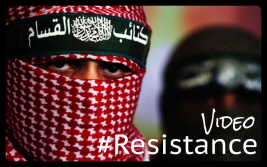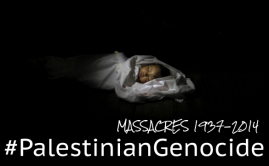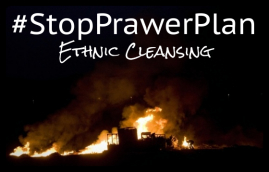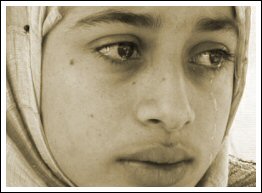“Settling” constitutes a warcime according to international law and ICC statute. Even under US’ own military legislations’
Law resources below this article
Monday October 14, 2013 01:57 by Saed Bannoura – IMEMC News
Follow @imemcnews
The Israeli High Court is set to rule on the forced expulsion of all of the residents of the village of Khirbat Zanuta, southwest of Hebron in the southern West Bank on Monday.

Villagers in Khirbat Zanuta (image by ACRI)
The decision comes five years after the initial order was made by the court to demolish the village. That decision was put on hold when an appeal was filed on behalf of the villagers by the Association for Civil Rights in Israel.
According to the Association for Civil Rights in Israel, “Last year, a Jewish expansionist organization named Regavim succeeded in reviving the case by filing an amicus-curia request; soon thereafter, the state submitted its full response to the petition. In April 2012, the Civil Administration issued additional demolition orders for new structures in the village, including several cisterns (ACRI is arguing that objections to the new orders should be joined to the original petition, but the Civil Administration disagrees). The Supreme Court heard additional arguments on July 30, 2012. During the hearing, the justices delivered harsh criticism of the State for its intent to demolish the village without suggesting a solution for its residents.”
But the decision on Monday is expected to result in the forced expulsion of all of the village’s inhabitants, who have lived on the land of their ancestors for as long as they can remember. They consider themselves stewards of the ancient archaeological site on which they live and tend their sheep, and have prevented any looting or destruction of artifacts on the site.
The Zionist organization Regavim that managed to revive the demolition order on the village had a quick response time from the court. The Israeli daily Ha’aretz reports that the organization has a “cozy relationship with the authorities”, according to its Director Bezalel Smotrich, who told the settler website Hakol Hayehudi on July 31, 2012, “Another parameter of the success of Regavim’s activities is the treatment by authorities in the establishment. Among the ranks in the field and in a lot of departments of the Interior Ministry, Israel Land Administration, the Justice Ministry and more, they view Regavim as a positive factor that is coming to their aid to steel them against the pressure they receive from the left. Most of them are good people, idealistic people… happy for the counter-pressure we exercise after years in which they absorbed so much heat in the form of pressure and letters from left-wing organizations.”
The inhabitants of Khirbat Zanuta are shepherds, who have traditionally lived in caves and structures around the cave entrances. The village is located in what Israel calls ‘Area C’, a designation created under the Oslo Accords in 1993 for land that was to temporarily remain under Israeli civil administration control, but should have been transitioned to Palestinian rule within five years. That never happened, and all of the areas designated as ‘Area C’ in 1993 remain under full Israeli control today – most of the 500,000 Israeli settlers that have taken over land in the West Bank in the twenty years since that designation have moved into ‘Area C’.
According to the Association for Civil Rights in Israel, “
The case of Zanuta is demonstrative of the Israeli government’s planning policy as it relates to the Palestinians in Area C, in which actions as severe as the destruction of basic humanitarian structures are justified by an absurd Catch 22 that penalizes residents for failing to apply for a permit they could never have been granted. If these demolition orders are carried out, the residents of Zanuta will be stripped of their most basic humanitarian rights: shelter, water, and livelihood, not to mention dignity, culture, and way of life. As an occupying power in Area C, Israel is bound by international law to protect the indigenous community. The case exemplifies a policy of demolishing buildings in Palestinian villages that removes indigenous peoples from their lands in absolute violation of the international law which protects them.”
![]()
LAW
“States may not deport or transfer parts of their own civilian population into a territory they occupy.”
Summary
State practice establishes this rule as a norm of customary international law applicable in international armed conflicts.
International armed conflicts
The prohibition on deporting or transferring parts of a State’s own civilian population into the territory it occupies is set forth in the Fourth Geneva Convention.[1]
It is a grave breach of Additional Protocol I.[2]
Under the Statute of the International Criminal Court, “the transfer, directly or indirectly, by the Occupying Power of parts of its own civilian population into the territory it occupies” constitutes a war crime in international armed conflicts.[3]
Many military manuals prohibit the deportation or transfer by a party to the conflict of parts of its civilian population into the territory it occupies.[4]
This rule is included in the legislation of numerous States.[5]
Official statements and reported practice also support the prohibition on transferring one’s own civilian population into occupied territory.[6]
Attempts to alter the demographic composition of an occupied territory have been condemned by the UN Security Council.[7]
In 1992, it called for the cessation of attempts to change the ethnic composition of the population, anywhere in the former Yugoslavia.[8]
Similarly, the UN General Assembly and UN Commission on Human Rights have condemned settlement practices.[9]
According to the final report of the UN Special Rapporteur on the Human Rights Dimensions of Population Transfer, including the Implantation of Settlers and Settlements, “the implantation of settlers” is unlawful and engages State responsibility and the criminal responsibility of individuals.[10]
In 1981, the 24th International Conference of the Red Cross reaffirmed that “settlements in occupied territory are incompatible with article 27 and 49 of the Fourth Geneva Convention”.[11]
In the Case of the Major War Criminals in 1946, the International Military Tribunal at Nuremberg found two of the accused guilty of attempting the “Germanization” of occupied territories.[12]
References
[1] Fourth Geneva Convention, Article 49, sixth paragraph (cited in Vol. II, Ch. 38, § 334).
[2] Additional Protocol I, Article 85(4)(a) (adopted by consensus) (ibid., § 335).
[3] ICC Statute, Article 8(2)(b)(viii) (ibid., § 336).
[4] See, e.g., the military manuals of Argentina (ibid., §§ 346–347), Australia (ibid., § 348), Canada (ibid., § 349), Croatia (ibid., § 350), Hungary (ibid., § 351), Italy (ibid., § 352), Netherlands (ibid., § 353), New Zealand (ibid., § 354), Spain (ibid., § 355), Sweden (ibid., § 357), Switzerland (ibid., § 357), United Kingdom (ibid., § 358) and United States (ibid., § 359).
[5] See, e.g., the legislation of Armenia (ibid., § 361), Australia (ibid., §§ 362–363), Azerbaijan (ibid., §§ 364–365), Bangladesh (ibid., § 366), Belarus (ibid., § 367), Belgium (ibid., § 368), Bosnia and Herzegovina (ibid., § 369), Canada (ibid., §§ 371–372), Congo (ibid., § 373), Cook Islands (ibid., § 374), Croatia (ibid., § 375), Cyprus (ibid., § 376), Czech Republic (ibid., § 377), Germany (ibid., § 379), Georgia (ibid., § 380), Ireland (ibid., § 381), Mali (ibid., § 384), Republic of Moldova (ibid., § 385), Netherlands (ibid., § 386), New Zealand (ibid., §§ 387–388), Niger (ibid., § 390), Norway (ibid., § 391), Slovakia (ibid., § 392), Slovenia (ibid., § 393), Spain (ibid., § 394), Tajikistan (ibid., § 395), United Kingdom (ibid., §§ 397–398), Yugoslavia (ibid., § 399) and Zimbabwe (ibid., § 400); see also the draft legislation of Argentina (ibid., § 360), Burundi (ibid., § 370), Jordan (ibid., § 382), Lebanon (ibid., § 383) and Trinidad and Tobago (ibid., § 396).
[6] See, e.g., the statements of Kuwait (ibid., § 405) and United States (ibid., §§ 406–407) and the reported practice of Egypt (ibid., § 402) and France (ibid., § 403).
[7] See, e.g., UN Security Council, Res. 446 , 452 and 476 (ibid., § 408), Res. 465 (ibid., § 409) and Res. 677 (ibid., § 410).
[8] UN Security Council, Res. 752 (ibid., § 411).
[9] See, e.g., UN General Assembly, Res. 36/147 C, 37/88 C, 38/79 D, 39/95 D and 40/161 D (ibid., § 412) and Res. 54/78 (ibid., § 405); UN Commission on Human Rights, Res. 2001/7 (ibid., § 413).
[10] UN Sub-Commission on Human Rights, Final report of the Special Rapporteur on the Human Rights Dimensions of Population Transfer, including the Implantation of Settlers and Settlements (ibid., § 415).
[11] 24th International Conference of the Red Cross, Res. III (ibid., § 419).
[12] International Military Tribunal at Nuremberg, Case of the Major War Criminals, Judgement (ibid., § 421).

 October 14, 2013
October 14, 2013 
 Still live in fairy-tale-land about Israel? Time to wake up: The Map of the “Greater Israel” even is hammered on the currency:All facts at Storify continuously updated. Read what Israeli ‘leaders’ have said and done even before (peace) talks and how their actions contradict the reality and ugly facts which they try to hide from you:
Still live in fairy-tale-land about Israel? Time to wake up: The Map of the “Greater Israel” even is hammered on the currency:All facts at Storify continuously updated. Read what Israeli ‘leaders’ have said and done even before (peace) talks and how their actions contradict the reality and ugly facts which they try to hide from you:































Comments are closed.